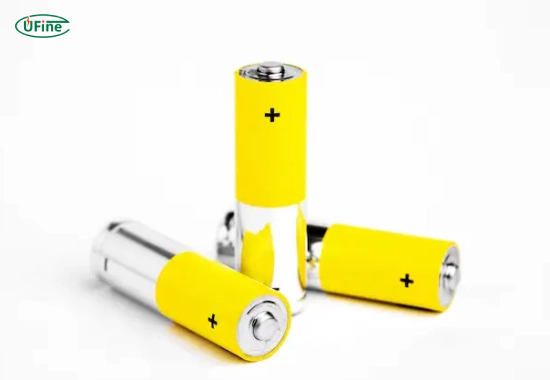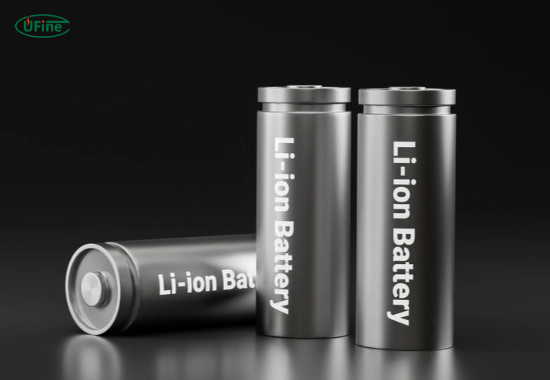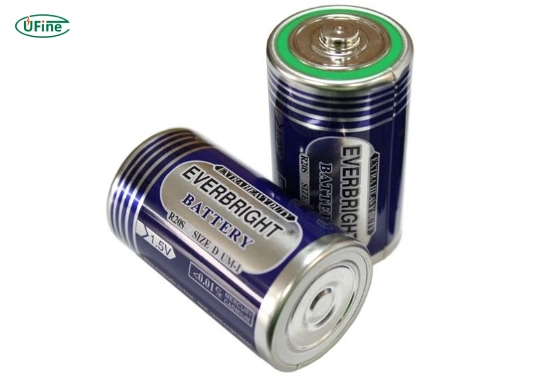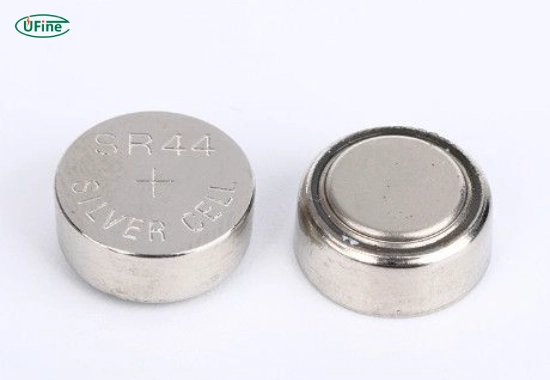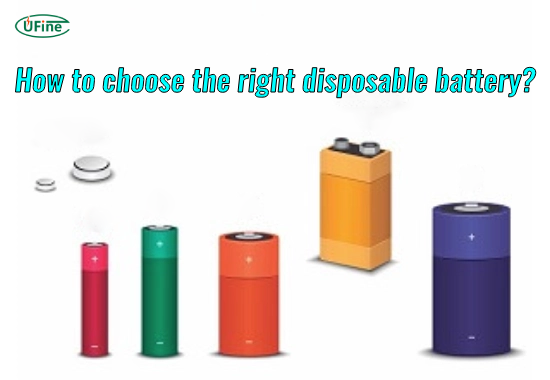Disposable batteries, also known as primary batteries, are essential in powering countless devices we use daily. From remote controls to flashlights and toys, these batteries are reliable, convenient, and widely available. But with so many types of disposable batteries available, it can be overwhelming to choose the right one for your needs.
In this guide, we’ll explore the most common types of disposable batteries, their unique features, and the best applications for each. By understanding the various options, you’ll be better equipped to select the right battery for your devices and maximize their performance.
Part 1. What are disposable batteries?
Manufacturers create disposable or primary batteries as single-use energy sources that users cannot recharge once depleted. Consumers widely use them in devices that require low to moderate energy consumption over an extended period. Unlike rechargeable batteries, users discard disposable batteries after exhausting their charge.
The most common types of disposable batteries include alkaline, lithium, zinc-carbon, and silver-oxide batteries. Each type has unique properties and is suited for specific purposes. To understand their features and ideal applications, let’s examine these battery types closer.
Small Rechargeable Batteries vs. Disposable Batteries
Part 2. What are alkaline batteries?
Alkaline batteries are the most well-known and widely used type of disposable battery. They are commonly used in everyday household items such as remote controls, wall clocks, toys, and portable radios.
Features of alkaline batteries:
- Made with zinc and manganese dioxide as the primary components.
- They provide a high energy density, meaning they last longer than other disposable batteries.
- Have a shelf life of up to 10 years when stored properly.
- Available in various sizes, including AA, AAA, C, D, and 9V.
Best applications for alkaline batteries:
- Alkaline batteries are excellent for low-drain to moderate-drain devices that do not require a constant power source. They are a cost-effective and reliable choice for most household gadgets.
Part 3. What are lithium batteries?
Lithium batteries are known for their superior performance and longevity compared to other disposable batteries. They are lightweight and provide a high energy output, making them ideal for powering modern technology.
Features of lithium batteries:
- Composed of lithium and manganese dioxide or other lithium compounds.
- Offer a much higher energy density than alkaline batteries.
- Perform exceptionally well in extreme temperatures, ranging from -40°C to 60°C.
- Have a shelf life of up to 15 years.
Best applications for lithium batteries:
- Lithium batteries are best suited for high-drain devices such as digital cameras, smoke detectors, medical equipment, and certain types of flashlights. They are also ideal for devices used infrequently but require reliable power when needed.
Part 4. What are zinc-carbon batteries?
Many consider zinc-carbon batteries one of the oldest and most budget-friendly disposable batteries. While they are not as powerful or long-lasting as alkaline or lithium batteries, they are still suitable for certain applications.
Features of zinc-carbon batteries:
- Made with zinc and manganese dioxide, with a carbon rod as the central electrode.
- Provide a lower energy density compared to alkaline batteries.
- Have a shorter lifespan and are more prone to leakage over time.
Best applications for zinc-carbon batteries:
- Users achieve the best results with these batteries in low-drain devices such as flashlights, remote controls, or clocks. Due to their affordability, they are a cost-effective option for devices that do not require a long-lasting power source.
Part 5. What are silver-oxide batteries?
Silver-oxide batteries are small, button-shaped batteries commonly used in compact electronic devices. They are known for their reliability and stable output voltage.
Features of silver-oxide batteries:
- Made with silver oxide and zinc as the primary components.
- Provide a consistent power output throughout their lifespan.
- Have a high energy-to-volume ratio, making them perfect for small devices.
- Offer a shelf life of up to 5 years.
Best applications for silver-oxide batteries:
- Silver-oxide batteries are ideal for watches, hearing aids, calculators, and small medical devices. Their compact size and stable performance make them a preferred choice for precision electronics.
Part 6. How to choose the right disposable battery?
Choosing the right disposable battery depends on several factors, including the device’s energy requirements, intended usage, and budget. Here are a few tips to help you make the right decision:
- Consider the device’s power needs: High-drain devices like cameras or medical equipment may require lithium batteries, while low-drain devices like remote controls can function well with alkaline or zinc-carbon batteries.
- Consider the frequency of use: Due to their long shelf life, lithium batteries are a reliable choice for devices used infrequently, such as smoke detectors.
- Check for compatibility: Always ensure the battery size and type match the manufacturer’s recommendations for your device.
- Budget considerations: Zinc-carbon batteries are affordable for low-drain devices, but investing in alkaline or lithium batteries can save money in the long run for high-drain devices.
Part 7. What is battery shelf life, and why does it matter?
Battery shelf life refers to storing a battery before it loses its charge or becomes ineffective. This is an important factor, especially for devices used infrequently, such as emergency flashlights or smoke detectors.
Shelf life comparison:
- Alkaline batteries: Up to 10 years.
- Lithium batteries: Up to 15 years.
- Zinc-carbon batteries: 2-3 years.
- Silver-oxide batteries: Up to 5 years.
Store batteries in a cool, dry place to maximize shelf life and avoid exposure to extreme temperatures.
Part 8. Are disposable batteries environmentally friendly?
Disposable batteries are not the most eco-friendly option due to the materials used in their production and the waste generated after disposal. However, many battery manufacturers are trying to reduce their environmental impact by implementing recycling programs and reducing harmful chemicals.
Tips for reducing environmental impact:
- Recycle batteries: Look for local recycling programs to dispose of used batteries properly.
- Avoid over-purchasing: Buy only the number of batteries you need to reduce waste.
- Consider rechargeable options: Rechargeable batteries can significantly reduce waste over time for frequently used devices.
Part 9. How to safely dispose of disposable batteries?
Improper disposal of disposable batteries can lead to environmental harm, as they may contain toxic materials if released into the environment. Follow these steps to dispose of your used batteries safely:
- Check local regulations: Some areas have specific guidelines for battery disposal.
- Use recycling programs: Many retailers and recycling centers accept used batteries for proper disposal.
- Avoid throwing batteries in the trash: People should never dispose of batteries in regular household garbage.
Part 10. FAQs
-
What is the most common type of disposable battery?
The most common type of disposable battery is the alkaline battery, widely used in household devices like remote controls, toys, and clocks. -
Can disposable batteries be recharged?
People should never dispose of batteries in regular household garbage. Attempting to recharge them can be dangerous and may cause leakage or explosion. -
Are lithium batteries better than alkaline batteries?
Lithium batteries have a higher energy density and longer shelf life than alkaline batteries, making them better for high-drain or long-term applications. However, they are also more expensive. -
How should I store disposable batteries?
Store disposable batteries in a cool, dry place away from direct sunlight or extreme heat to maximize their shelf life. -
Are all button batteries the same?
No, button batteries come in different types, such as silver-oxide and lithium, each suited for specific applications like watches or hearing aids.
Related Tags:
More Articles

How to Choose the Best Floor Scrubber Battery for Commercial Cleaning?
Selecting the ideal floor scrubber battery ensures a long runtime, rapid charging, and minimal maintenance for efficient commercial cleaning operations.
Battery for Blower vs Battery for Leaf Vacuum: Which One Should You Choose?
Battery for blower vs leaf vacuum—learn the key differences in power, fit, and runtime to choose the right battery for your outdoor tool needs.
How to Choose the Right Battery for Blower?
Choosing the right blower battery? Consider voltage, capacity, chemistry & usage. This guide helps match the best battery for peak performance.
How to Choose the Best Insulated Battery Box for Lithium Batteries?
Choosing the Best Insulated Battery Box for Lithium Batteries? Discover key factors such as size, material, and safety for optimal protection and performance.
7 Critical Elements on a Lithium Battery Shipping Label
What must be on a lithium battery shipping label? Learn 7 key elements to ensure safety, legal compliance, and correct handling across all transport modes.
